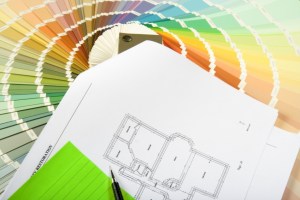The following is a guest post by Robyn Randall, ASID from Scottsdale, Arizona.
_____________________________________
 – What is the Difference Between an Interior Designer and an Interior Decorator? –
– What is the Difference Between an Interior Designer and an Interior Decorator? –
It is not widely understood what the difference is between interior designer and interior decorator. Some of this is complicated by the fact that in many states there is no licensing required to call yourself a designer. In those states anyone can hang a sign on their door and profess to be an interior designer.
Arizona is one of the states that does not currently require licensing, therefore the line is blurred between a designer and a decorator. When someone tells you they are licensed, for the most part, they are referencing their sales tax license which allows them to purchase items tax exempt. And, unfortunately, the barrier to get this kind of license is not that high.
If you do a Google search for designer vs. decorator, you will get a broad spectrum of answers.
Merriam-Webster defines each as outlined below:
Interior designer: One who practices the art, or practice, of planning and supervising the design and execution of architectural interiors and their furnishings.
Interior decorator: One that decorates; especially : one that designs, or executes, interiors and their furnishings.
To break it down and to quote the NCIDQ (National Council for Interior Design Qualification): “Interior design is the art and science of understanding people’s behavior to create functional spaces within a building. Decoration is the furnishing or adorning of a space with fashionable or beautiful things. As interior designers we apply creative and technical solutions that are functional, attractive and beneficial to the occupants’ quality of life and culture, often times using a systematic and coordinated methodology—including research, analysis and integration of knowledge into the creative process—to satisfy the needs and resources of the client.” As I like to say, it’s not all about making things look pretty.
So How Does it Work?
Because of their involvement in the architectural design process, designers must achieve a level of formal training (and licensure in states requiring a license) and adhere to code and regulatory requirements, whereas decorators require no formal training or licensure.
Many U.S. states and Canadian provinces have passed laws requiring interior designers to be licensed or registered – documenting their formal education and training—and many of them specifically require that all practicing interior designers earn the NCIDQ Certificate to demonstrate their experience and qualifications. The exam put forth by NCIDQ is recognized by most states as the “testing body” for interior design, much like the bar exam is to lawyers.
To be sure, the individual who decides to pursue the technical skills required of a designer should still possess the creative skills. I personally do not believe schooling can teach creativity (not to be confused with artistic ability, although adding that to the mix makes for an even better design professional).Creativity is something that is an inherent skill.
As a professional who constantly seeks continuing education credits to keep abreast of changing laws, codes and product offerings, I would advise any consumer looking for a design professional to do their homework. If someone is calling themselves an interior designer and if they are “touching the structure” in any way, you want to make sure that that they have the qualifications and training to do so.
More Information:
Robyn Randall, ASID
Designs by Robyn LLC
Email
Website: www.DesignsByRobyn.com
Twitter: @RobynASID


